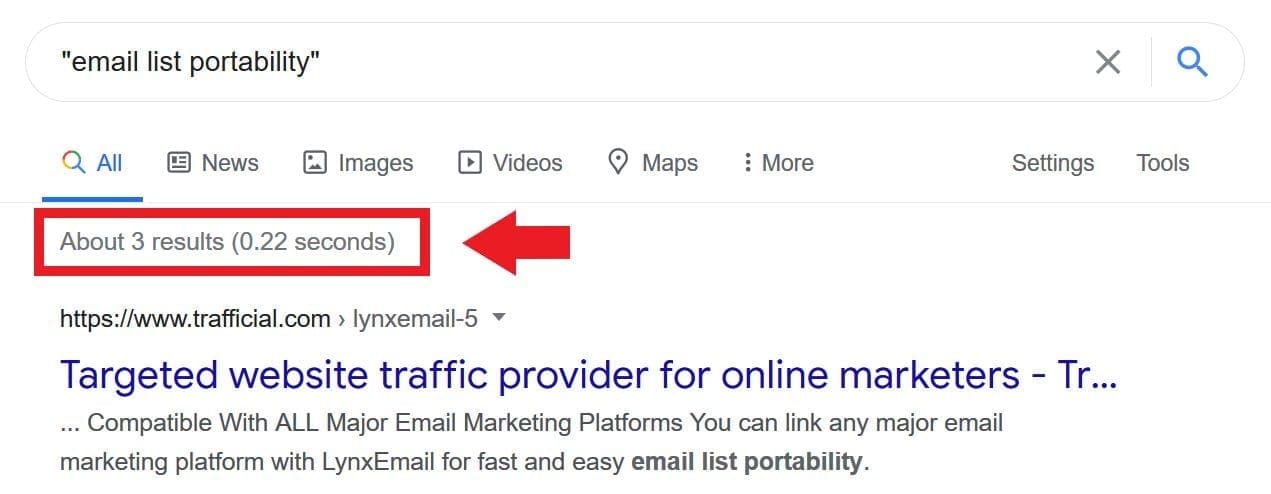What is Email List Portability?

Written by Casey Botticello
Disclosure: Some of the links below are affiliate links, meaning that at no additional cost to you, I will receive a commission if you click through and make a purchase. For more information, read our full affiliate disclosure here.
Every once in a while, I notice specific concepts referenced by a number of top digital marketing experts. These topics are widely known, and are implemented by many content creators, however, these topics have yet to be discussed in larger circles because they lack useful and succinct terminology.
While there has been plenty of discussion among bloggers about the importance of “building an email list” (which, as an aside, actually is good advice), most people overlook the more nuanced corollary to this advice:
Bloggers should build a highly portable email list, in order to maximize the value of each newsletter subscriber.
Searching Google for the exact phrase currently yields only 3 (largely, unhelpful) results:
Email list portability refers to the ability to transfer your email list and the associated subscriber data, from one email marketing system to another.
Email list portability is a constant concern for bloggers who rely upon third party platforms, which vary in the level of access that they give you to your subscribers’ information.
For example, consider a digital publishing platform like Medium.
Medium has only recently announced that it was giving its writers the ability to export limited information about their newsletter followers. This represents one of the more strict extremes of email list list portability.
Under Medium’s system:
- Until recently, writers had no way of accessing any data relating to their subscribers. Most notably, there was no way to generate and export an email list with all the contact information of your followers.
- Even under the new system, which allows publication editors to export limited data, Medium remains in control, and insists on acting as the middlemen between writers and their audience.
- Consequently, if you were to be banned from Medium or decide to stop using the platform, it would be tough to bring your audience with you.
The other extreme offers complete email list portability. This setup consist of a self hosted blog/website, with some type of lead generation system.
Yes, even in this scenario you are somewhat dependent upon a third party service when it comes to actual email marketing (i.e. Mailchimp, Convertkit, etc.). but the actual email list, along with any possible subscriber information, belongs to you. You own your email list.
That is not to say that Medium’s more restrictive email list portability is a deal breaker. I love the site and rely upon it to generate large amounts of traffic and build a following on both Medium and my own third party platforms.
It’s a pretty straightforward deal. I post content on Medium, leveraging their platform and domain authority for increased exposure. Medium allows me to use their platform, promote my brand, collect limited subscriber data. Medium in term gets endless “free” content from a small army of writers.
Why Does Email List Portability Matter?
1. Ownership
You do not own Facebook, Twitter, Medium, or Google. Your social media campaigns and SEO efforts can go to waste when these platforms change their policies.
On the other hand, when you own your email list, and it is not influenced by decisions of other businesses. The ability to export your subscriber data, and move to another platform, is a key component of “owning your email list.”

2. Segmentation
Your email subscribers have already shown interest in your product or content. Since you already know what they like, you can deliver them highly relevant offers to get better results. This is called segmentation.
Email marketing segmentation isn’t a tactic reserved only for brands with the most advanced marketing automation software. With a simple email marketing service and a bit of creativity, you can start targeting your audience with these easy segmentation strategies today.

3. Direct Communication
People read email in the privacy of their inbox. The message is not on a public timeline or newsfeed. They can ask you questions directly in private with confidence. This helps build trust and connection.
You may have heard that Facebook has 1.4 billion and Twitter has 100 million daily active users. What you have may not have heard, is the number of people using Email every day.
Every internet user has at least one email account. There 3.8 billion active email accounts. That’s half the population of Earth.
This is precisely why every smart business in the world has an email list.
Big name brands learned this lesson a long time ago, and that’s why they spend thousands of dollars on social media campaigns to get people to sign up for their email lists.
They understand that email marketing is the best long-term investment with a much higher return because people will continue to get their message at a very low cost for a longer period of time

4. Community Building
Having direct access to your subscribers is essential to building an online community.
An online community is a group of people who interact with each other on an online platform. These communities can range from the billion-person Instagram community to a 10-person community of coffee lovers that rates artisan cafes in their city through a private Facebook group.
A major part of building a successful online community, is having the ability to reach out to your readers directly. If you can only export limited email contact information from a platform (i.e. you can export links to profiles or just names, and not their emails), building an online community can be very challenging.

5. Fees
Increased email list portability gives writers the ability to avoid transaction fees imposed by third party platforms.
For example, if you have a paid Substack publication, Substack charges 10% of your subscription revenue. In addition, there is a credit card fee charged by Stripe, their payments provider (2.9% and $.30 per transaction fee).
At any given time, Substack could increase its fee it charges writers or alter its pricing structure for newsletters altogether. You may want to switch to another platform that charges a smaller fee.
However, you can only “leave” Substack with information that they give you access to about your subscribers.
In the specific case of Substack, there is pretty high email list portability, meaning, you can easily export a list of your subscribers to a standard spreadsheet and import them to a new platform.
However, not all digital publishing platforms are as flexible with the data your have access to, and email list portability is often overlooked by writers who start writing on one platform, without giving it too much thought, and then feel trapped.

Conclusion
Bloggers should build a highly portable email list, in order to maximize the value of each newsletter subscriber. Email list portability ensures that writers have total ownership of their email list, can segment subscriber data, maintain direct communication with their subscribers, building an online community, avoiding fees charged by third party platforms.




